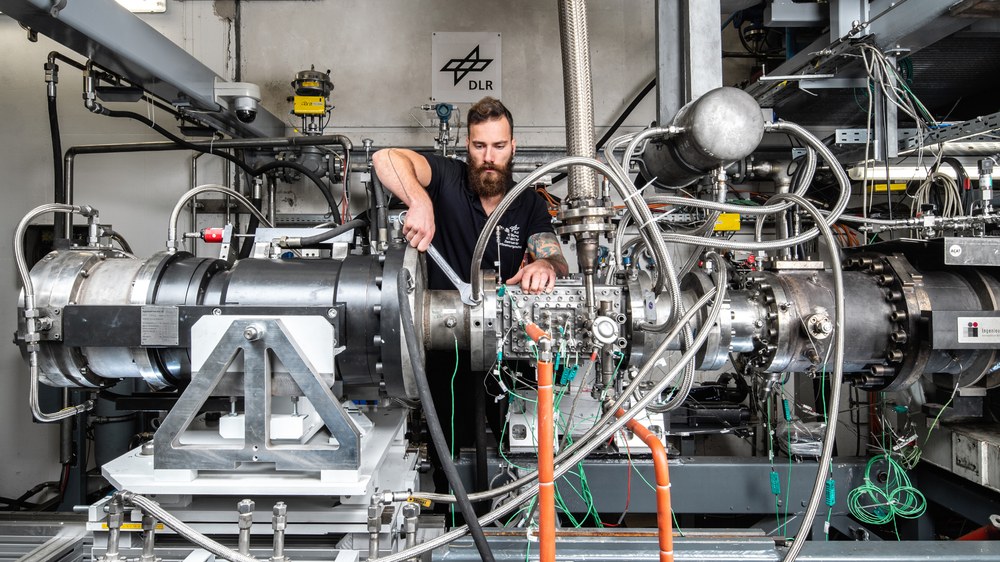Originally used to test hydrogen propulsion components for the European Space Shuttle, High Pressure Combustor test Facility (HBK 3) was converted in 1995 to a combustion chamber test facility for flight applications. Since 2011, the test bed has also been connected to the natural gas infrastructure, offering maximum fuel flexibility: hydrogen, sustainable aviation fuels, paraffin and natural gas can be used. Due to its dimensions, HBK 3 offers the possibility to validate combustor components with a thermal output of up to 9 megawatts. As part of DLR's research collaborations, experiments are being carried out with industrial partners to simulate real-life cycle process parameters for pressure and temperature.
The dimensions of the HBK 3 make it capable of validating combustion chamber components with a thermal output of up to 9 megawatts. As part of DLR's research collaborations, experiments are carried out with industrial partners to simulate real-cycle process parameters for pressure and temperature.
Component testing in the lower power range offers technological added value, particularly at a low level of technical readiness, while at the same time reducing the financial risk for the developer, as inlet conditions and air and fuel mass flows can be varied with a high degree of flexibility independently of the overall system. The system allows individual combustors to be tested outside the machines under real conditions: inlet pressure, inlet and outlet temperature, and air and fuel mass flow can be adapted to any operating condition, independent of the real compressor and turbine characteristics. The HBK3 infrastructure thus increases the speed of innovation and accelerates the time-critical transformation of the energy system and aviation towards CO2 freedom.
Characteristics of the test bed
Highest fuel flexibility
Testing of individual combustion chambers outside the engine under real conditions
Flexible setting of operating conditions
Research Topics
Aeronautics:
Validation of prototypes
Fat Lean Module technology in single sector experiments under real operating conditions for combustor pressure and exhaust gas temperature
Thermo-acoustic combustor experiments under real operating conditions
Long-term combustion chamber material studies under cyclic load conditions
Power engineering:
Gas turbine flexibility: substitution of standard fuels with hydrogen, sustainable aviation fuels
Simulation to demonstrate combustor technologies for
Combustion chamber technologies for CO2 separation
Tecnical Data
Performance | 9 MWth |
Static pressure | bis 40 bar(a) |
Preheating temperature | bis 973 K |
Air mass flow | bis 7 kg/s |
Fuels | CH4, H2, Kerosin, Heizöl, Sonderbrennstoffe |

